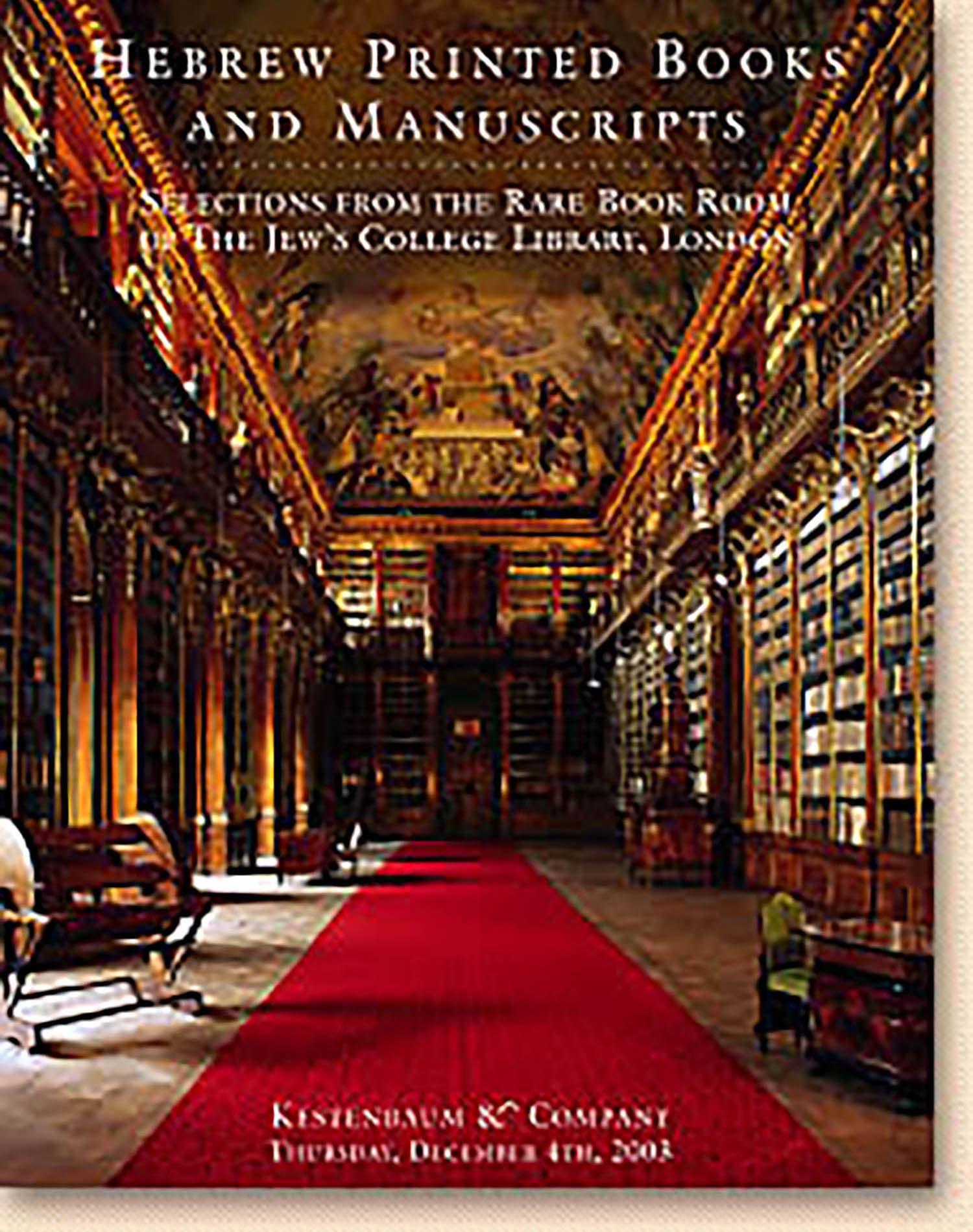Pfefferkorn, Johannes. Die Sturmglocke [“The Alarm Bell”]. n.p., 1514 * BOUND WITH: Luther, Martin. Dass Jesus Christus ein geborener Jude sei (“That Jesus Christ Was Born A Jew”) (Wittemberg, 1523)

AUCTION 21 |
Thursday, December 04th,
2003 at 1:00
Kestenbaum & Company Holds Inaugural Auction of Hebrew Printed Books & Manuscripts at Their New Galleries
Lot 21
(ANTISEMITICA)
Pfefferkorn, Johannes. Die Sturmglocke [“The Alarm Bell”]. n.p., 1514 * BOUND WITH: Luther, Martin. Dass Jesus Christus ein geborener Jude sei (“That Jesus Christ Was Born A Jew”) (Wittemberg, 1523)
Est: $1,500 - $2,000
PRICE REALIZED $2,000
Die Sturmglocke was a nexus in the ongoing Pfefferkorn-Reuchlin controversy that lasted a full decade from 1511 to 1521.
Johannes (Joseph) Pfefferkorn (1469-after 1521) was a Jewish butcher who converted to Christianity, and published over the years some of the most pernicious anti-Semitic literature ever. His opposite number Johannes Reuchlin was a Christian Hebraist who defended the Talmud and Jewish religion against Pfefferkorn’s onslaughts. Reuchlin inherited from his mentor Pico della Mirandola, the Italian humanist tradition, and, while a firm believer in Christianity, advocated a return to the multiculturalism and pluralism of the Roman Empire. There is no doubt that Reuchlin was the more learned of the two sparring partners. Humanists who defended Reuchlin, consistently accused Pfefferkorn of ignorance of Jewish scholarship and of fromting on behalf of the Dominicans Friars.
In 1513, Pope Leo X convened a special Ecclesiastic tribunal at Speyer to adjudicate the Pfefferkorn-Reuchlin controversy. The following year, a judgment favorable to Reuchlin was handed down, only to be torn down by Pfefferkorn in Cologne. In that same year of 1514, he published a further rejoinder, Die Sturmglocke.
The net effect of the Pfefferkorn-Reuchlin controversy was a loss of face and undermining of the credibility of the regnant Roman Church. This in turn provided fertile ground for the inroads of reformation and the attacks of MartinLuther, founder of Protestantism. The historic image of Luther (1483-1546) is that of a virulent antisemite. Certainly his career developed into that, but in this embryonic stage of his development, he actually wrote in defense of the Jews. In the present slim pamphlet, Luther presents the Jews—of the same race as Jesus—in a sympathetic light. He understood only too well their refusal to accept the “papal paganism” of the existing church, with its graven images. At this stage in his career he viewed himself as a successor to Reuchlin, and like him, disapproved of the confiscation of the Talmud.
See Hans-Martin Kirn, Das Bild vom Juden im Deutschland des Frühen 16. Jarhunderts Dargestellt an den Schriften Johannes Pfefferkorns (Tübingen, 1989), p. 181; Arno Herzig and Julius H. Schoeps (eds)., Reuchlin und die Juden (Sigmaringen, 1993); Elisheva Carlebach, Divided Souls: Converts from Judaism in Germany, 1500-1750 (New Haven, 2001), pp. 52-53; EJ, Vol. XIII, cols. 355-357 and EJ, Vol. XI, cols. 584-586
